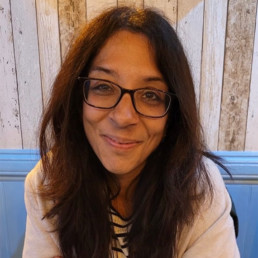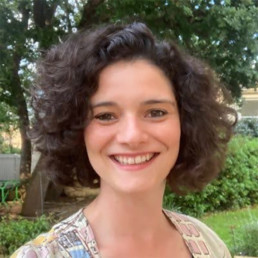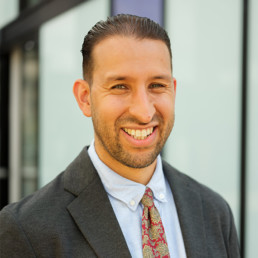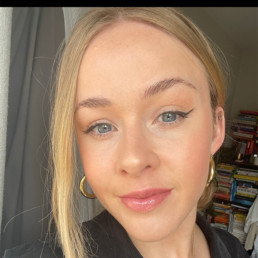Reimagining School Leadership: Diversity as a Catalyst for Transformation

Written by Krystian McInnis
Krystian McInnis is a Religious Education consultant, advisor, and researcher specialising in decolonising and diversifying Religious Education. With a career that spans the public, private, and charity sectors, he brings extensive national and international experience in curriculum diversification and decolonisation. As the Co-Founder of Reimagining Education, Krystian is dedicated to creating a more inclusive and equitable educational system where everyone feels seen, heard, and that they belong.
The conversation around diversity in education often focuses on students, but one of the most powerful avenues for change lies in rethinking the governance structures that steer the educational experience. School governing boards are not just responsible for overseeing budgets and policies; they shape the very culture and ethos of a school or trust. In an increasingly diverse world, the importance of creating governing boards that reflect the community’s broad spectrum of experiences cannot be overstated.
As the UK’s demographics continue to evolve, it’s crucial that school governing bodies mirror the diversity of the student populations they serve. However, too often, governing boards remain stagnant, with leadership teams failing to represent the multifaceted identities of their school communities. This lack of representation impacts not only the policies implemented but also the approach to leadership and the school culture itself.
The Case for Diverse Governance
The need for diversity on school governing boards goes far beyond a simple call for fair representation. It is about creating governance structures capable of addressing systemic challenges, championing inclusive practices, and ensuring equitable educational opportunities for all students. A governing board composed of individuals with varying cultural, racial, and socioeconomic backgrounds brings diverse perspectives that enrich the decision-making process. As George (2022) notes, diverse leadership fosters innovation, empathy, and policy relevance, qualities that are essential for navigating today’s complex educational landscape.
Research also points to the tangible benefits of diverse boards. Carter (2021) highlights how cultural awareness among board members directly impacts policy priorities and curriculum content, leading to a more inclusive school culture. When governing bodies mirror the student population, they are better equipped to address the unique needs of all learners, from ensuring cultural sensitivity to promoting inclusive teaching practices.
Begum (2020) emphasises that diversity on governing boards isn’t just about policy changes but about student engagement and motivation too. When students see their identities reflected in the leadership, they feel a greater sense of belonging, which directly impacts their academic performance. Moreover, when parents and community members see themselves represented, trust and engagement between the school and its broader community grow, resulting in stronger partnerships that benefit everyone.
Reimagining Leadership for a Modern Education System
The impact of diverse school boards extends beyond the student body to the staff and the broader school community. A diverse governing board sets the tone for inclusive hiring practices and supports the development of a workforce that reflects the diversity of the students it serves. UK school governance has long been dominated by a small group of individuals with limited diversity. It’s time to break free from outdated models and embrace a more inclusive, adaptable leadership structure that can respond to the evolving needs of a multicultural society.
Reimagining leadership means moving away from traditional, hierarchical structures and creating space for a broader range of voices. This isn’t just about “ticking boxes”, it’s about recognising that a more diverse leadership team brings unique lived experiences that allow for a deeper understanding of the challenges faced by students and staff alike. Schools that adopt this mindset create an environment that is flexible, innovative, and, most importantly, inclusive.
From Recruitment to Retention: Building an Inclusive Governance Model
Recruiting diverse members for school governing boards is an essential first step, but it’s far from sufficient. Schools must also invest in ongoing training and support to ensure these members are prepared to be effective contributors. Too often, once new members are appointed, the assumption is that the job is done. In reality however, the work is just beginning. Schools must rethink their induction processes, ensuring that new governors receive the necessary training to navigate the complexities of modern, multicultural educational systems.
I would suggest therefore, this includes tailored training on cultural competency, anti-racism, and inclusive leadership, which are essential to support not only the school community but also the board members themselves. Furthermore, schools can benefit from building collaborative networks with community organisations and support systems, expanding the resources available to both staff and students. These networks help enrich the educational experience, provide additional resources for families, and strengthen ties between the school and the wider community.
Moreover, tracking diversity metrics is also a critical component of this work. Schools must be intentional about gathering and using data on ethnicity, gender, socioeconomic status, and disability. This data should not be collected for the sake of numbers but should serve as a tool to inform decisions, address gaps, and ensure all voices are heard. Accountability is key to ensuring that diversity is not just a buzzword but a sustained, meaningful practice that guides decision-making at every level of governance.
Towards a Future of Inclusive Governance
The path to inclusive governance requires commitment, not only in diversifying the membership of school governing boards but in ensuring that diversity is embedded in every aspect of the governance process. When school boards truly reflect the communities they serve, students, parents, and community members are more likely to feel engaged and invested in the school’s success. Diversity in governance is not just a “nice-to-have”; it is essential to the development of a school system that is truly inclusive and capable of addressing the needs of all its stakeholders.
The journey towards inclusive governance may be challenging, but the rewards are immense. Schools with diverse governing boards are better positioned to create environments where every student feels valued, engaged, and empowered to succeed. Therefore, as we look to the future of school governance, we must ask ourselves:
- How can we ensure that our governing boards are truly representative of the communities they serve, in ways that go beyond numbers to reflect the richness of experience and perspective?
- What steps can schools take to dismantle the barriers that prevent underrepresented groups from accessing leadership roles in governance?
- How can we move beyond viewing diversity as a “nice-to-have” and recognise it as an essential driver of student success, community engagement, and educational equity?
References
Begum, H. (2020). The Importance of Representation in School Leadership.
Carter, J. (2021). The Role of Cultural Competency in Educational Leadership.
George, R. (2022). Reforming Leadership: The Shift Towards Inclusive Governance.
Supreme Court Ruling - Key Information for Educators

Written by DiverseEd
Diverse Educators started as a grassroots network in 2018 to create a space for a coherent and cohesive conversation about DEI. We have evolved into a training provider and event organiser for all things DEI.
Introduction
On Wednesday 16th April the UK Supreme Court shared their ruling on the case For Women Scotland Ltd v The Scottish Minister, which interprets the legal definition of the word ‘sex’, as used in the context of The Equality Act 2010.
Since the court handed down, the ruling has been spoken about extensively in the regulated media, unregulated social media, and in Parliament.
We have read and listened to much of the coverage from diverse sources, and responses to the ruling have ranged widely. Some have exaggerating, misinterpreting or misrepresenting the details of the case, and others have expressed strong emotional reactions, which may act to exacerbate the fear that many trans people are currently experiencing.
Our intention in this piece is to present the details as accurately and clearly as we can. In order to do so, we have tried to avoid presenting our own opinions in much of the following piece. However, we think it is important to be transparent before we begin. We know trans people, we love them, we live our lives alongside them, and we are deeply concerned about the way this ruling is already impacting their lives. We believe that it is the duty of our government to enact laws which provide workable and inclusive protection from discrimination, and ensure dignity and respect for all people – including transgender people. With that clear, let’s begin.
Background
In 2018 the Scottish Government presented a new law, which aimed to get more women on public boards. The Scottish Government included trans women who had obtained a Gender Recognition Certificate (GRC) within this aim, which they felt was in-line with The Equality Act 2010, and the Gender Recognition Act 2004. However, the group For Women Scotland disagreed – they felt The Equality Act 2010’s protected characteristic of ‘sex’, and specifically its use of the word ‘woman’, was not intended when written to include trans women.
For Women Scotland therefore brought a judicial review to the UK Supreme Court, requesting they review the lawfulness of the Scottish Government’s position in relation to The Equality Act 2010. Therefore, it was the job of the UK Supreme Court to provide a statutory interpretation of the meaning of ‘man’, ‘woman’, and ‘sex’ as used in The Equality Act 2010, and specifically whether that definition includes trans women who have a GRC.
The Ruling
The UK Supreme Court unanimously agreed that, for the purposes of interpreting the word ‘sex’ under the Equality Act 2010, Parliament’s intention was to refer to ‘biological sex’ (a term which neither the law or the court defines clearly) rather than legal gender acquired through a GRC. This means that legal protections associated with the characteristic of ‘sex’ may not apply to trans women in most contexts. The decision was made because to include transgender people who have a GRC within The Equality Act 2010 definition would make the law unworkable.
There are some details of the ruling which we think are important.
Firstly, the ruling is specifically addressing the definitions as used in The Equality Act 2010. The judge, when handing down the ruling, explained that the origins of the language used in The Equality Act 2010 is the Sex Discrimination Act 1975, which the judge stated, ‘adopted a biological interpretation of the terms men and women’. Note the wording here – the Acts have adopted an interpretation. This ruling does not define what a woman is – it interprets what it means in the specific context of a 15-year-old Act, which pulls on an interpretation used in 1975.
Secondly, this ruling does not justify the discrimination of trans people. The court clarified several times during their hand down that trans people are still protected from discrimination under The Equality Act 2010, which includes ‘Gender Reassignment’ as a protected characteristic. The judge explained that this protection extends to cover trans people whether they have a GRC, or not. Furthermore, there is some legal precedent that non-binary people may also be protected under this characteristic – although this is legal precedent and not case law. The judge also clarified that transgender women can still be protected under the characteristic of ‘sex’ through associated or perceived protections of women. We think it is also important to note that the language used by the judge presenting the ruling was mostly respectful, and used correctly gendered language at all times when talking about trans people – stating clearly that this ruling should not be seen as a triumph for any one group over another.
Finally, we think it is contextually important to understand that the court system in the UK interprets the laws which are enacted by Parliament. This ruling is thus an interpretation of law, and our current government can clarify this interpretation, or change the law to make it workable and inclusive, should they wish to.
What does this mean for society, and for schools?
The legal implication of this ruling is that it is legally possible for provisions of services to be single-sex, and exclude trans men or women. Our understanding is that the Supreme Court ruling does not state provisions of services have to exclude trans people, but they may legally choose to be single-sex provisions if they can demonstrate this is a ‘proportionate means of achieving a legitimate aim’, and in such cases these single-sex provisions may legally exclude trans men or women.
In society, this may impact: workplaces; services open to the public such as hospitals, shops, restaurants, leisure facilities, refuges, and counselling services; sporting bodies; schools; and associations (groups or clubs of more than 25 people which have rules of membership). The Equality Human Rights Commission (EHRC) has released an interim update on practical implications of the ruling, in which they suggest that it is compulsory to provide sufficient single-sex toilets in workplaces, and changing and washing facilities where these are needed – this is not compulsory for services that are open to the public. The EHRC interim update suggests that such spaces should be separated based on the Supreme Court interpretation of the Equality Act 2010, meaning that “trans women (biological men) should not be permitted to use the women’s facilities and trans men (biological women) should not be permitted to use the men’s facilities” (please note this is a direct quote of the EHRC guidance, and not language we would choose to use). The guidance goes on to explain that “trans people should not be put in a position where there are no facilities for them to use”, and that “where possible, mixed-sex toilet, washing or changing facilities in addition to sufficient single-sex facilities should be provided”, or facilities in “lockable rooms (not cubicles) which are intended for the use of one person at a time” – these can be used by anybody. The details set out in the EHRC interim guidance were not mandated by the Supreme Court Ruling. However, as stated previously our understanding is that services may legally choose to be single-sex provisions if they can demonstrate this is a ‘proportionate means of achieving a legitimate aim’, and in such cases, these single-sex provisions may legally exclude trans people.
In schools, it has never been possible for young people to obtain a GRC, but this ruling may still impact: single-sex schools; school toilets and changing spaces; physical education and sport; and residential accommodation. In each of these areas, our understanding is that a school may now legally choose to hold single-sex spaces, if they can demonstrate that this choice is a proportionate means of achieving a legitimate aim, and in such cases these single-sex spaces may exclude trans young people (or trans staff). The EHRC interim guidance introduced above suggests that schools “must provide separate single-sex toilets for boys and girls over the age of 8” and “single-sex changing facilities for boys and girls over the age of 11”. Following the Supreme Court ruling, the guidance suggests that “pupils who identify as trans girls (biological boys) should not be permitted to use the girls’ toilet or changing facilities, and pupils who identify as trans boys (biological girls) should not be permitted to use the boys’ toilet or changing facilities”. They clarify that “suitable alternative provisions may be required”. Again, please note this is a direct quote of the EHRC guidance, and not language we would choose to use.
The details set out in the EHRC interim guidance were not mandated by the Supreme Court Ruling, but as state previously our understanding is that schools may legally choose to hold single-sex provisions if they can demonstrate this is a ‘proportionate means of achieving a legitimate aim’, and in such cases, these single-sex provisions may legally exclude trans people. For example, it would be legal for a school to have a single-sex sports group which does not allow trans young people to participate – or for schools to prevent trans young people from accessing the toilet aligned with their gender.
Although this is currently the only legal implication of this ruling, we are already seeing the misrepresentation of this ruling creating social implications beyond the legal bounds of the case. Transgender discrimination is increasing, and cis-gender people are already being discriminated against because of false assumptions about their gender. Although single-sex provisions excluding trans people are legal, and encouraged by the interim EHRC guidance, it is difficult to enforce or police without making assumptions which could be false. Furthermore, we are already hearing from teachers that this ruling has created further uncertainty, particularly around staff confidence in discussing trans identities and the protected characteristic of ‘Gender Reassignment’, which could impact the inclusive quality of Relationships, Sex, and Health Education (RSHE) and Personal, Social, Health Economics (PSHE).
There is a lot of misinformation, which is leading to worsening, and at times unlawful, discriminatory language and behaviour. Government Ministers have stated the ruling requires transgender people to use toilets related to their sex assigned at birth, which is also set out in the EHRC interim guidance – this is not stated in the ruling. The Prime Minister has claimed the ruling offers clarity by defining women as biological women – this is misleading as the court judgement only pertains to an interpretation of what was meant by Parliament in The Equality Act 2010, and as clarified above it is parliament who enact and change law. Our current government could clarify or change law to make it workable and inclusive, should they wish to – the courts do not dictate definitions to Parliament.
Actions you may wish to consider taking
We hope that reading this piece has helped you to feel more informed about the Supreme Court ruling. Below are some actions you may wish to undertake as a result of what you have read:
- Please challenge mis-characterisations of this ruling and clarify that transgender people are still legally protected from discrimination, and that any decision to exclude them from provisions of services, whilst legal for single-sex provisions, and encouraged in the EHRC interim guidance, were not mandated by the court ruling. It is important that the ruling is spoken about with as much accuracy as possible.
- Revisit policies – this ruling may require more accurate and thought-out language in policies which reference men and women, boys and girls, or The Equality Act 2010 protected characteristics of Sex and Gender Reassignment.
- If you are concerned about this ruling, then you may wish to take the time to write to your local MP and express your concerns. Remember, Parliament makes the laws, and the courts can only interpret them – our current government can change The Equality Act to include more clear and inclusive definitions which provide workable protections and dignity to all people – including transgender people.
- If you are concerned about the EHRC interim guidance, then they have stated that a consultation will launch in mid-May and last for two weeks. You may wish to use this consultation to share your view.
- Read and share our Diverse Educators Resources to support you and your school community. Here is our Transgender Rights’ Toolkit and here is our Growing Trans and Non-Binary Awareness Training.
This piece was written by members of the Diverse Educators’ team and is intended for informational purposes only; it does not constitute legal advice nor a formal legal interpretation. This blog was published on 26/4/25, and all information was to the best of our understanding at the time of publishing.
Further Resources
- A clear and accurate legal explanation from Kalina Hagen – Click Here
- Trans Actual Response – Click Here
- An interim update on practical implications from the EHRC – Click Here
Decolonising the curriculum

Written by Shashi Knott
Shashi Knott is an English teacher and former Deputy Head of Sixth Form, with 16 years of experience teaching in state secondary schools across North London. After earning her MSc in Education, Power, and Change, she transitioned from her role as a full-time English teacher to focus on driving change within education. She is interested in working with other professionals to see how we can create more compassionate environments in schools. She is currently an outreach English teacher and Associate Trainer with KCA Training.
Decolonising the curriculum is like finding new love—it’s hard work, often requiring us to let go of what we’ve cherished. It’s a struggle, and one that calls for understanding and acknowledgment of the emotions involved.
The department meeting went silent. A chair scraped awkwardly as we shifted at tables. It was nearly 4.30pm. Everyone had marking to do. Was this about to get tricky?
In London, where I work as an English teacher, 46.2% of residents identify as non-white. It’s not a difficult context to make an argument that the texts we teach our students should be more representative. And yet, somehow, we don’t seem to make it happen.
We could absolutely have spent some of our fast- vanishing department budget on a new set of texts for Year 9. Amazingly, we all agreed that Elizabeth Acevedo’s ‘The Poet X’ would be an excellent choice for the spring term. However, when one of us asked, “What about George Orwell?” I know they were not the only ones thinking this. The silence in the room might have suggested otherwise, and we all knew what we should say next. So when our Head of Department was conciliatory, coming up with the comfort of delay, we were all secretly relieved. “We’ll revisit the discussion at the end of the term.” “ We’ll review again in our gained time.” “We’ll assess our existing schemes of work for diversity. ”
We know what we should be advocating for, but there are so many reasons why teaching ‘Animal Farm’ feels more comfortable, and it’s not just because we already have established schemes of work.
As English teachers and often English graduates, we have all internalised an idea of what constitutes the canon. Literary critic Harold Bloom describes canonical texts as works of ‘aesthetic beauty’ (1994) and therefore, he suggests, to question these texts is to question the merit of art itself. Bloom describes the ‘idealistic resenters’ who ‘denounce competition’ and want to focus on marginalised voices, as missing the point of art and culture. (1994) Whilst Bloom’s ideas have been convincingly challenged and are now certainly out of fashion, they are ideas that we cannot fail to have internalised. Many of us grew up with these views being the dominant narrative in the study of English Literature and speaking for myself, I did much work to embrace the canon. I certainly did not want to be seen as someone who missed the point of art.
We have to acknowledge that decolonising our minds is uncomfortable. It involves acknowledging that some of the texts we loved, we might need to let go. A bit like the way a song from our youth, however rubbish, will always evoke strong feelings, those first occasions of literary love will do the same. The first time you felt seen, grown up, clever, understood. That first moment of connection with the canon. Mine was Keats, the perfect poet for the
misunderstood teen. Decolonising the curriculum involves a deconstruction of the canon, of beloved texts, and that can mean a painful epistemic discomfort. We picked apart those texts. We invested meaning in them. We succeeded at them. That’s why we’re English teachers.
Decolonising the English curriculum is as much about interrogating our own relationship with literature as it is about buying new books or creating schemes of work. It is about being willing to forge new relationships with texts and giving our students those special moments of connection, potentially with texts that are not our one true love. It’s not just about representation for global majority students, it’s about a more inclusive literary canon for everyone.
Maybe as English teachers we need to go forth and find new literary loves. New characters to fall for. New writers to make students feel understood, and to voice, in new ways, all the age old feelings. Not a new canon. Just new names to add in. New, gritty, glittering, literary loves for students of English to come.
References
Bloom, H. (2014) The western canon: The books and school of the ages. New York: Houghton Mifflin Harcourt.
Why Every Child Deserves to Hear Their Own Song

Written by Matthew Dix
Matthew Dix is a primary school teacher of 17 years. He continues to work as a teacher whilst working as a primary reading consultant across Nottinghamshire. He is the Founder of resource website Manic Street Teachers and has recently launched 'Musician of the Month' to create a culture of musical appreciation and understanding across schools, with a focus on diversity and inclusion.
Growing up, music wasn’t just background noise – it was how I made sense of the world. It was my mum playing the piano, it was watching her dance to ABBA and playing, of all things, a mandolin! It was my dad blasting heavy metal one minute and Vivaldi the next. Nothing quite says ‘peaceful Sunday morning’ like Iron Maiden shaking the windows!
As I reached adolescence, my heroes ranged from Tupac Shakur to Freddie Mercury, from John Lennon to Annie Lennox. Following their lives taught me that struggles were universal and at the end of a struggle, there can still be success. Behind every composition, every lyric, every guitar solo was a person with a story – often one of resilience against all odds.
Music took centre stage when I formed an indie band in the early 2000s. It wrote songs, often with the children’s help, for primary school subjects when I began my career as a teacher. It was a focus of mine when I created the music resources for ‘Manic Street Teachers’. Music has always been in the foreground of whatever I do.
A decade ago, I took a job in an inner-city school in Nottingham with 98% of children having English as an additional language. In fact, there were 52 different languages spoken in total. And yet, the music curriculum offered very few mirrors of themselves or windows to other worlds. A colleague and I decided to introduce a new musician every month in the hope of engaging children who seemed vacant during singing assemblies, and often unable to discuss and share their likes and dislikes in music lessons.
It wasn’t until we chose Nusrat Fateh Ali Khan as a musician one month that parents started to leave emails, children started to talk and a buzz started to make its way through school. I remember a child telling me that their parents listened to him at home. We shared his life, his trials and tribulations, his achievements and videos of his performances. Children could explain his words and what they meant. They were fascinated to learn that he had come to England in 1985 and brought Qawwali music (a form of Sufi Islamic devotional singing originating in India) with him. Children finally saw themselves and their families in our curriculum.
👉 Free Sample (Nusrat Fateh Ali Khan) – sign in required
It got us thinking. What if a girl thought that she could never be a classical musician because she looked nothing like Mozart, Beethoven or Bach? Well, we created resources all about Florence Price, whose compositions were forgotten until, just 16 years ago, when a whole collection of her work was rediscovered in a dilapidated house on the outskirts of St. Anne, Illinois.
What about a child who believes music is impossible with a disability? We shared Stevie Wonder’s story, Jacqueline du Pré’s story, and we shared how Joni Mitchell had to detune her guitar to learn to play another way after polio affected her hand. Let’s show them how these artists found ways to keep playing, no matter what. The show must go on, as Freddie Mercury said!
We live in a global world – our music curriculum should reflect that. Instead of saying, “Let’s learn African drumming,” let’s say, “Let’s learn about Babatunde Olatunji, a Nigerian drummer who learned by immersing himself in the culture and following the master drummers in his village, eventually being given a cowbell and then various Yoruba drums, took his craft to America, became an important friend to Martin Luther King Jr., and became a world-wide sensation!”
If a child thinks you can’t play music when you’re old, then share the story of The Buena Vista Social Club – how Ry Cooder, a producer from the US, had a twist of fate when musicians from Mali had their visas delayed so he ended up in Cuba, reuniting forgotten musicians like Ibrahim Ferrer, who was still shining shoes to make ends meet. The musicians, most of whom were over 70 years old, finally had a chance to tour the world with their music.
👉 Read our EYFS eBook (Ibrahim’s Song)
Context is always king, and every child loves a story. I believe the person behind the music is as important as the music itself, and becomes the bridge to another world. Teaching children to empathise helps them feel less detached from the music they are studying. Music bridges cultures, generations, and experiences in ways that words alone sometimes cannot.
That’s why I created Musician of the Month – a simple, accessible way for teachers to bring diverse musical stories into their classrooms. It’s directly linked to The Model Music Curriculum and the 9 Protected Characteristics and, as the site develops, we hope it will help schools show every child that they too can be a musician. To a child in school, the right musician, with the right song, at the right moment could well hit the right notes!
👉 Musician of the Month + Free Sample (David Bowie)
True Inclusion Starts with Seeing Students for Who They Are

Written by Purvi Gandhi
Purvi Gandhi, MA MBA FCCT CPsychol is a psychologist, educator, and advocate for student wellbeing, leadership, and equity in education. With a career spanning clinical psychology, secondary and post-secondary education, and educational leadership, she bridges mental health and education through evidence-informed practice. She is the author of A Little Guide for Teachers: Student Mental Health, a practical resource for educators.
Imagine stepping into a new environment where your name is mispronounced or shortened to something more “convenient.” It’s a minor inconvenience, perhaps, but one that over time chips away at your sense of belonging. Now imagine this happening every day, in a place where you are supposed to grow, learn, and thrive.
For many students, particularly those from ethnic minority backgrounds, this is not hypothetical—it is their daily reality. And yet, within the walls of our classrooms, the power of a name is often underestimated. Names are not just labels; they carry history, identity, and cultural heritage. To overlook them is to overlook the student. To get them right is to affirm who they are.
Beyond Good Intentions: Why Inclusion Must Be Active
In a recent workshop with early career teachers, we explored what it really means to create inclusive classrooms—beyond policies, beyond slogans, and into the lived experiences of students. The session began with a simple but revealing exercise: storytelling.
One African tale set the tone. A great flood sweeps through the land, and every animal finds a way to escape—even the mighty crocodile. High up in the trees, the monkeys spot a fish struggling in the floodwaters. Moved by compassion, they “rescue” it, placing it safely on a branch. Of course, the fish begins to suffocate.
The lesson is clear: good intentions do not equate to good outcomes. In education, a one-size-fits-all approach can be just as ineffective as the monkeys’ well-meaning mistake. Every student has unique needs, shaped by culture, background, and identity. The question is, are we paying attention?
Consider this: A teacher, in an off-the-cuff remark during a classroom discussion on relationships, casually states that arranged marriages are “backward” or “unfair.” It’s not intended to harm, just a spontaneous reaction based on personal beliefs. But what if a student from a culture where arranged marriages are the norm is sitting there, quietly absorbing that statement?
Perhaps this student has spent years trying to navigate the space between two worlds—balancing the values of their family with the expectations of the society they are growing up in. Now, in a single moment, they are made to feel that their culture is lesser. They may go home carrying this conflict, questioning their parents, their upbringing, and where they truly belong. Suddenly, they feel like an outsider in both places—neither fully at home at school nor at home with their family.
This is the impact of uninformed assumptions. Educators do not just teach subjects; they shape perspectives. A thoughtless comment can widen the gap between a young person and their identity, making them feel alienated rather than empowered.
To be truly inclusive, we must move beyond our own perceptions and seek to understand the lived experiences of others. We must create spaces where students don’t feel forced to choose between their heritage and their education, but rather see their identities reflected and respected within the school environment.
Because, just like the fish in the flood, what a student truly needs may not be what we assume is best for them. Listening, learning, and adapting is the key to meaningful inclusion.
Rethinking What It Means to ‘See’ Our Students
An alternative version of the tale drove the point home. In this retelling, the animals hold a competition to see who can see the farthest. The eagle soars and surveys the horizon, the giraffe gazes across the savanna, and the monkey takes in the view from the treetops. When it’s the fish’s turn, it can only see the immediate waters around it. The other animals laugh—until the fish explains that while they focus on the distance, it detects subtle currents, hidden dangers, and movements they cannot perceive.
Here lies a second lesson: students should not be judged against a singular definition of success. The education system, often fixated on rigid measures of ability, risks missing the unique strengths that lie beneath the surface. A student who struggles with traditional assessments may have an extraordinary ability to lead, innovate, or empathize—if only we are willing to recognize it.
The Power of a Name
Of all the discussions that day, one stood out: the impact of names. Inspired by Bennie Kara’s work on diversity in education, we asked teachers to explore their own names—their meanings, origins, and the personal stories behind them. What followed was a conversation about identity, belonging, and the small but significant ways that schools can either affirm or erode a student’s sense of self.
One student shared how her intended name was “Yah Yah,” meaning “gift from God,” but her parents, wanting to make life easier in an English-speaking country, renamed her Ysabella. She was seated alongside another student, Anjali, whose name means “gift to God.” Here were two students, from different cultures, bound by the same idea: they were gifts.
Imagine the impact of recognising that connection—not as a coincidence, but as an intentional act of inclusion. When we take the time to pronounce a name correctly, to understand its meaning, or even to ask about it, we are sending a powerful message: You belong here.
Moving From Awareness to Action
It is easy to talk about inclusion in broad terms. It is harder—but far more necessary—to embed it into daily teaching practice. The workshop concluded with three core reflections for teachers:
- Cultural Competence: How much do I really know about my students’ backgrounds? Where are the gaps? What steps can I take to learn more?
- Equity Over Equality: Do I recognize the unique needs of my students? How can I tailor my support to meet them where they are?
- Celebrating Identity: What cultural capital do my students bring into the classroom? How can I acknowledge and honour it?
Education is not just about imparting knowledge; it is about shaping identities. A student who feels unseen will struggle to engage. A student who feels valued will thrive.
The work of inclusion is not grandiose. It does not require a total overhaul of curriculum or sweeping policy changes. It starts with the smallest of acts: a correctly pronounced name, a thoughtful seating plan, a recognition that success looks different for everyone.
And perhaps, that is the greatest takeaway of all—belonging is built in the details.
References:
Fernando-Smith,L and Aow, A, (2024), ‘Letting go of imposter syndrome: writing herstory.’ In Disruptive Women – A Guide for Equitable Action in Education, Corwin
Kara, B., 2020. A little guide for teachers: Diversity in schools, Corwin
Pierson, R., 2013. Every kid needs a champion. TED Talks Education.
Leaders Engagement in Mothers’ Matters

Written by Emma Sheppard
Emma founded The MTPT Project, the UK's charity for parent teachers, in 2016 when on maternity leave with her first child. She has 12 years experience as an English teacher, Lead Practitioner and ITT Lead, and now runs The MTPT Project full time.
At The MTPT Project, we take our commitment to inclusion seriously. As Founder, I love reviewing our data annually for our Diversity and Inclusion report, the way that this informs our strategies as a small charity and the impact this then goes on to have.
One of these strategies to come out of our 2023-24 report was to improve engagement tracking at events directed to leaders in our sector. We are curious to know whether our work is perceived – in broad terms – as workforce and retention or diversity and mothers.
It makes sense that our programmes aimed at staff who are parents attract an overwhelmingly female audience. Because of our national and sector parenting policies, mothers are still afforded more paid time on birthing maternity leave than fathers and non-birthing partners, and this is when gendered routines around parenting take root and influence the division of domestic and professional labour in the long term – particularly in heterosexual couples.
Our leadership work, however, is aimed at senior leaders and above. Statistically, these are positions where men are over-represented at both primary and secondary level. If our work is (correctly) seen as workforce and retention, then up to 60% of our audience at these events should be men.
At this mid-point in the year, then, how far do school leaders still consider the retention, progression and wellbeing of parent-teachers as a ‘mothers matter’?
We’ve tracked data over 15 events – most of which have been optional to attend – aimed at school and systems leaders, and this is what we’ve found:
- On average, just 17% of attendees at these events have been men
- On three occasions, there has not been a single male face in the room
- Three events have hit our starter target of 24% male representation (the proportion of men in the wider teacher workforce, not at leadership level) and these were events billed as retention, flexible working, or an obligatory meeting for local headteachers
We count a number of men within our professional network who show up regularly to champion the work that we do. They sign off funding, make introductions, speak up on behalf of our community, work on research and data projects, platform our work on social media and speak at our events.
But men are not showing up enough as audience members to learn about the daily, and systems-wide practice that can be implemented to support working mothers for the overall health of our workforce and – ultimately – the schools they are leading.
An acute example of this disconnect: 22% of the speakers at The MTPT Project’s Missing Mothers conference are fathers and leaders from our community, but – two weeks ahead of the event – not one of the 135 ticket holders are men.
When organisations are considered who is “best placed” to attend MTPT events, the data suggests that they are still sending leaders with first-hand experience of motherhood. Clearly, the view is that these mothers’ matters are best handled between mothers and by mothers.
Statistically, however, these mothers, sorting things out between themselves, are less likely to be in leadership positions than men. They are less likely to wield decision-making power and they are less able to role model effective allyship to other men.
If we really want to make a sustainable difference to the teacher retention crisis, our male leaders need to stop seeing mothers as a diversity group, and instead know that mothers are workforce.
To Belong Is Not Enough: Why We Must Move Towards Mattering

Written by Mohamed Abdallah
With almost two decades of experience, Mohamed started his journey in youth work and pupil referral units before spearheading groundbreaking inclusive practices and systems as a leader in an 'Outstanding' all-through mainstream school. Driven by a relentless commitment to positive change, Mohamed now dedicates his efforts to collaborating with school leaders across the nation as the Head of the Inclusive Leadership Course at The Difference.
“No one would care if I weren’t here.”
I can remember the words hitting me hard. As Designated Safeguarding Lead there were immediate red flags, but on a human level it broke my heart.
100% attendance, great progress, and never in trouble. On paper he belonged – but in reality he thought nobody cared.
Across the country, I hear the language of belonging increasingly referenced in discussions about student engagement, wellbeing, and success. And I welcome it. It’s a refreshing shift in our narrative about the student experience.
Still, something didn’t feel right. Then, it clicked.
It is not enough to simply belong; you should also matter.
My experience has shown me that a student can belong to a school community without ever feeling that their presence or contributions truly matter. A friend recently shared a US study with me that revealed a surprising finding: a sense of ‘belonging’ to a school community did not significantly affect academic performance. But instead there were other factors that determined success, such as participation and self regulated learning.
Think about it this way: You belong to a gym, but do the regulars know your name? You belong to a workplace, but do your ideas shape the way things are done? You belong to a school, but when you are absent, is there a noticeable void?
Mattering is more than belonging to a place or a community; it is about your significance.
One of the most prominent academic advocates for mattering is the US community psychologist Isaac Prilleltensky. He argues that developing a strong sense of mattering depends on two things: feeling you are valued, and feeling that you add value – whether that be within your workplace, your community, your family, or your friendship group. In the UK, my good friend Luke Billingham has been one of the most influential thinkers and writers on young people and mattering.
The Three Components of Mattering in Schools
After multiple voice notes back and forth, Luke and I sat down to discuss this matter (see what I did there!), and we asked:
If a student stopped coming to school tomorrow, would they feel like their absence was noticed?
Does every student have positive and affirming relationships with peers and at least one adult?
Are students actively shaping the school environment, or are they simply complying with expectations?
These questions helped us think more deeply about mattering. Of course, students should belong. But would we be satisfied as school leaders with 100% attendance, high attainment, and zero suspensions, yet students still told us, “No one would care if I weren’t here”?
They should feel they matter.
Reflecting on our experiences in different schools, Luke and I identified some key factors which we think enable students to develop mattering; Voice, Relationships, and Participation.
- Voice: Too often, schools claim to prioritise student voice while keeping real decision-making at the leadership level. But voice is not just about being heard. Schools must embed student experience and perspectives into decision-making, not just through surveys, but by creating opportunities for meaningful dialogue and change. Even when student perspectives challenge us, they offer uncomfortable truths we must engage with. When students see their input shape school culture, they matter.
- Relationships: A student might belong to a school, but do they have relationships that affirm their worth? Schools could cultivate opportunities for positive peer relationships to create strong social bonds, and to ensure every student has at least one trusted adult. Relationships built on trust and recognition, and environments where students feel valued and connected.
- Participation: Mattering isn’t just about feeling noticed, it’s about feeling needed. Students need opportunities to contribute meaningfully to their school communities. This goes beyond enrichment clubs; it means ensuring that students are actively shaping their environments. Whether through student-led campaigns, or engaging with the local community, authentic participation allows students to see their impact.
Why Mattering Matters for Inclusion
I worry that belonging is being used as a catch-all solution for inclusion, or dare I say it, a form of soft inclusion. For many students from marginalised backgrounds, belonging can feel conditional. They may be required to turn up, but do they feel like their presence and identity are essential? Do they see themselves reflected in the curriculum? Are their voices shaping school systems? Are their experiences acknowledged and valued?
Mattering addresses these questions by ensuring that students are not just included, but recognised as integral members of their schools. For students from underrepresented backgrounds, the feeling of mattering can be a protective factor against marginalisation and disengagement.
If we stop at belonging, we risk creating schools where students exist but don’t thrive, they comply but are disengaged, are included but unseen. The real challenge for schools isn’t just inclusion. It’s significance. Instead of asking, ‘Do our students belong?’ ask, ‘Do they know they matter?’
World Book Day 2025

Written by Robert Davies
Rob Davies is Associate Assistant Headteacher at Calderstones School in Liverpool. This role involves leading on anti-racism in education, sharing practical strategies, reflections, and initiatives to create a more inclusive, representative, and equitable school. He shares insights on decolonising the curriculum, diversifying reading materials, and fostering anti-racist practices in schools.
Another year, another World Book Day—same costumes, same characters. Harry and Hermione? Check. Little Red Riding Hood? Of course. The Gruffalo? Naturally. And let’s not forget Mrs. Trunchbull, stomping through the halls. Sound familiar? Thought so.
But here’s the thing—World Book Day can be so much more. It’s time to move beyond the usual suspects and reimagine it through a truly diverse lens. Let’s make it an event where every student sees themselves in the stories we celebrate.
Every year, World Book Day celebrates the magic of stories. But whose stories are we telling? Who do they inspire? When books and characters overwhelmingly reflect white, middle-class experiences, whose voices are missing? Are we selecting a diverse range of books that offer all children equitable opportunities to see themselves?
If not, isn’t it just Book Day?
At its core, World Book Day aims to “promote reading for pleasure, offering every child and young person the opportunity to have a book of their own.” But if we fail to approach it through an anti-racist lens, are we truly serving all students?
The Representation Gap in Children’s Books
In the UK, 33.5% of school-aged children come from ethnic minority backgrounds. Yet, between 2017 and 2019, only 7% of children’s books featured characters from these cultures—and just 5% had a Black, Asian, or Minority Ethnic main character.
Research shows that when children see themselves in books, it shapes their sense of identity and possibility.
Despite limited representation, excellent books exist that help students feel seen, foster belonging, and cultivate a love of reading. But do schools actively seek them out?
The issue goes beyond just introducing diverse books. What if teachers haven’t read them, or don’t understand their significance?
Whose culture has capital?
With a predominantly white teaching workforce (Runnymede Trust, 2020), how often is World Book Day shaped through an anti-racist lens? One of the biggest motivators for reading is emotion—how books make us feel (Dungworth et al., 2004). Naturally, educators promote books that resonated with them in childhood, shaped by their own experiences.
If most books being championed reflect the same narrow cultural perspectives, what message does that send? Who do these books inspire—and who gets left out?
Research further supports this. More children from ethnic minority backgrounds than white backgrounds say they don’t see themselves in what they read (40% vs. 30.5%), with Black students feeling this most acutely.
Making It a World Book Day
If World Book Day is to truly reflect all students, schools must take active steps to make it more inclusive. That’s exactly what we did at Calderstones School this year.
As one of Liverpool’s largest secondary comprehensive schools, diversity is our strength. But we recognised that World Book Day needed to reflect that diversity, ensuring all students felt represented and engaged.
So, we embraced the ‘world’ in World Book Day. We focused on books and authors from a variety of cultures and languages, fostering conversations about students’ mother tongues and cultural backgrounds.
We collaborated with Greenbank Primary School and Leeds Beckett University to involve primary school students and Global Ambassadors. Together, they read books from their home countries in their native languages—including Arabic, Basque, Farsi, French, Greek, Mandarin, Polish, Russian, Urdu, and more.
By showcasing this linguistic and cultural diversity, we highlighted the vital importance of representation in education. The readings were recorded, edited, and shared on the school’s social media. The response? Overwhelmingly positive. For many in our community, this was the first time their language and heritage were visibly celebrated in school.
How to Rethink World Book Day in Your School
If we are serious about delivering a truly inclusive World Book Day, here’s lets start with the following: 1. Move Beyond the Same Old Costumes
Rather than dressing up as characters from GCSE texts, consider why these books dominate the curriculum. Less than 1% of GCSE students study a book by a writer of colour—so why reproduce that marginalisation on World Book Day?
- Conduct a Student Voice
Ask students:
- What books would you love to explore?
- Do you see your culture and heritage reflected in the school library?
- What stories are missing from the shelves?
- Use these insights to shape book selections and discussions.
- Explore Translated Literature
Many beloved English books originated in other languages—Pinocchio was originally Italian. What other global stories could students discover? World Book Day can be an opportunity to highlight the rich traditions of storytelling from around the world.
Final Thought: A Call to Action
By embracing the ‘world’ in World Book Day, we made it more meaningful for our students. This is a step in the right direction—but it can’t stop here. Schools must challenge traditional reading lists, elevate diverse voices, and ensure that every child sees themselves in the stories they read.
We can’t diversify the teaching workforce overnight, but we can broaden our thinking. We must ensure that we view events like World Book Day through an anti-racist lens.
Because if World Book Day doesn’t include all stories, is it really World Book Day at all?
Diversifying English Literature texts: Five ways to get your schools to invest

Written by Jessica Tacon
Jessica Tacon is second in charge of the English Department at City of London Academy Highgate Hill and is a member of NATE’s (National Association for the Teaching of English) ‘Reviewing Literature’ working group. She created The Right Writing campaign which aims to improve racial diversity in English Education.
The title of this piece reflects an ongoing challenge in education, but also an opportunity. While many schools and educators have made strides in diversifying their English curricula, there’s always room for progress. Students across the country deserve to see themselves reflected in the texts they study, while also being exposed to a wide range of perspectives. Diverse literature enriches learning experiences, fosters empathy, and ensures every student feels valued.
Here’s a brief overview of why a diverse and inclusive curriculum is essential:
- Representation matters: Research by Penguin Random House revealed that many students never study a text by a writer of colour, apart from a few poems in their GCSE studies. They also found that only 7% of students study a text by a woman, and just 0.1% study a text by a woman of colour. Every child deserves to see their experiences and identities reflected in what they read. Not only does this enhance engagement and enjoyment, but it can also lead to better academic outcomes.
- Retention in English Studies: When students don’t see themselves or diverse perspectives in their English lessons, they may perceive the subject as irrelevant. This may lead to a drop in the number of students pursuing English at A-level, which in turn impacts representation in higher education and English-related fields. A diverse curriculum can break this cycle by making the subject more relatable and meaningful.
- Broadening horizons: While representation is crucial, it’s equally important to introduce students to experiences, cultures, and voices beyond their own. Literature has always been a bridge to other worlds, offering insights into lives that differ from our own. This is a fundamental aspect of fostering curiosity and empathy in young people.
- Addressing historical imbalances: Historically, the English curriculum has often overlooked diverse voices. As educators, we have the opportunity (and responsibility) to address these imbalances and create and embed a curriculum that is inclusive, honest, and representative of a wide range of experiences.
Despite these clear benefits, the teaching of a diverse and inclusive range of literature texts isn’t yet the norm in all schools.
Support (and essential investment) is needed from senior leads in schools, and multi-academy trusts, to make this a reality. It is challenging as individuals may not be English specialists, but the points above highlight how a change in English can have a far-reaching impact on young people.
With this in mind, I would like to explore the common barriers to change and five solution-focused strategies to help schools embrace a more inclusive curriculum.
Strategies
Strategy 1: Emphasise the positive impact on students
Barrier: Leadership may focus on the potential challenges rather than the benefits of inclusivity.
Solution: Highlight the research-backed benefits of a diverse curriculum. For instance, the research by Penguin Random House shows students are more engaged when they see themselves reflected in their studies, and they perform better academically. Explain how inclusive texts also broaden students’ horizons, fostering empathy and critical thinking by exposing them to new perspectives and cultures. Frame change as being much less of a risk than continuing to teach a set of texts which actually may be disengaging students in the English classroom.
Message for leadership: A diverse curriculum creates a more engaged and motivated student body, which translates to higher achievement and a stronger school culture.
Strategy 2: Frame diversity as a shared responsibility
Barrier: Leaders may feel diversity initiatives are an additional challenge in an already complex system.
Solution: Present inclusivity as a professional and moral responsibility to address historical imbalances in education. Position the school as a leader in creating a curriculum that prepares students for life in a diverse and interconnected world.
Message for leadership: Diversity isn’t just a ‘nice-to-have’; it’s essential for fostering a fair and well-rounded education. Implementing an inclusive curriculum aligns with the school’s duty to provide all students with an equitable experience.
Strategy 3: Offer practical solutions to time and workload challenges
Barrier: Leaders may worry that introducing new texts will increase workload for already overstretched staff.
Solution: Reassure them that high-quality, ready-to-use resources are available. Platforms like BBC Bitesize offer support materials on a range of texts including some recently added to diversify exam board text options, such as My Name is Leon and Leave Taking. BBC Bitesize, as its name suggests, is a great jump-off point for exploring a diverse range of texts by breaking them down into manageable chunks.
Message for leadership: Implementing an inclusive curriculum doesn’t need to add extra strain. Leverage existing resources and expert support to streamline the process.
Strategy 4: Address staff confidence with professional development
Barrier: Some educators may feel unprepared to teach unfamiliar texts or discuss sensitive topics.
Solution: Advocate for investment in professional development such as training sessions or workshops that help staff gain confidence in teaching diverse texts. Highlight that introducing new material can be professionally invigorating, offering opportunities for growth and fresh perspectives. For instance, one text added to AQA’s English Literature GCSE as part of their diversity drive is Princess and the Hustler by Chinonyerem Odimba. It’s a modern, engaging text that explores rich themes, literary techniques, and historical context, making it a rewarding teaching (and learning) experience.
Message for leadership: Building staff confidence through professional development ensures successful implementation while reinvigorating teaching practices.
Strategy 5: Present change as achievable and incremental
Barrier: Leaders may see curriculum reform as an overwhelming, all-or-nothing process.
Solution: If this is the case, advocate for a phased approach, starting with small but meaningful changes (such as introducing one or two new texts). You could suggest piloting new texts with specific classes before scaling up.
Message for leadership: Curriculum change doesn’t need to happen all at once. An incremental approach makes the process manageable while demonstrating the positive impact of inclusive texts.
Looking ahead
It’s important to acknowledge that change in education is rarely quick or easy. However, the potential benefits far outweigh the challenges. A truly diverse and inclusive curriculum not only enriches students’ academic experiences but also prepares them to navigate an increasingly interconnected world.
Of course, diversifying texts is just one part of creating an inclusive school environment. Staff training, teaching approaches, and the broader school culture all play critical roles in ensuring that diversity is embedded meaningfully and authentically.
Every student deserves an education that values their identity and broadens their horizons. As we move forward, let’s commit to making this vision a reality.
To access the BBC Bitesize GCSE English Literature collection, please visit: https://rebrand.ly/7d51da
Ramadhan in Schools: building welcoming and inclusive spaces

Written by Maslaha
Maslaha works to change and challenge the conditions that create inequalities for Muslim and Black and brown communities in education, criminal justice, health and on the basis of gender, in a continued climate of Islamophobia, racism and negative media coverage.
For many Muslims, Ramadhan is a time of joy, community and to recharge spiritually. Yet whether it’s choosing to pray at lunchtime or wear a hijab during these days, visible expressions of faith are often met with hostility – expressions of ‘Muslimness’ are treated as a threat. In this way, Ramadhan exposes the Islamophobia that persists throughout the rest of the year.
As educators, we know that when young people feel safe bringing their whole selves to a space, it directly impacts their self-esteem, confidence and sense of belonging. This psychological safety affects not only wellbeing, it directly influences students’ engagement, attainment, and overall success in school.
Young people and families have shared how Islamophobia in schools and policies like The Prevent Duty have left them feeling isolated and led them to self-censor out of fear of judgement or even punishment.
We asked young people and their families what they would like their teachers to know, or do during Ramadhan. We put together what they said into this resource, and share five practical ways to create safe and inclusive spaces for students who choose to observe it: Ramadhan in schools
For more resources to support you build your anti-racist classroom, deliver a culturally-relevant curriculum and nurture safe spaces for all young people, see Education | Maslaha

